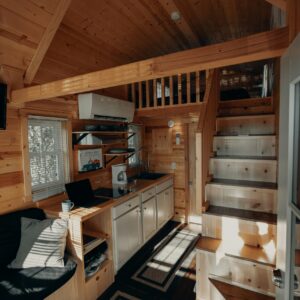“Eco-friendly home interior design concepts”
Designing for Tomorrow: Embracing Eco-Friendly Home Interior Concepts
Introduction: As the world becomes more conscious of environmental sustainability, the concept of eco-friendly home interior design is gaining popularity. Creating a home that not only nurtures comfort and style but also minimizes its ecological footprint is a goal that resonates with many. In this blog, we’ll explore inspiring eco-friendly home interior design concepts that seamlessly blend aesthetics with environmental responsibility.
- Sustainable Materials: The foundation of an eco-friendly interior design begins with the choice of materials. Opt for sustainable, renewable resources such as bamboo, reclaimed wood, and cork. These materials not only add a natural warmth to your space but also contribute to the conservation of forests and reduce the demand for new resources.
- Recycled and Upcycled Furniture: Embrace the beauty of recycled and upcycled furniture. Salvaged pieces can be transformed into unique, stylish additions to your home, reducing the need for new manufacturing. Explore thrift stores, online marketplaces, or even consider repurposing existing furniture to give it a new lease on life.
- Energy-Efficient Lighting: Illuminate your space with energy-efficient lighting solutions. LED bulbs, for instance, consume significantly less energy than traditional incandescent bulbs and have a longer lifespan. Consider incorporating natural light through strategically placed windows and skylights, reducing the need for artificial lighting during the day.
- Indoor Plants and Greenery: Bring the outdoors in by incorporating indoor plants into your design. Not only do plants add a touch of nature to your home, but they also improve air quality by filtering out pollutants. Consider low-maintenance plants like snake plants, pothos, or spider plants to effortlessly integrate greenery into your interior.
- Water-Conserving Fixtures: Make a difference in your water consumption by installing water-conserving fixtures. Low-flow faucets, showerheads, and dual-flush toilets contribute to water conservation without compromising functionality. This eco-friendly approach extends the sustainability of your home to every aspect of daily living.
- Upcycled Decor: Extend the principles of upcycling to your decor. Choose accessories and accent pieces made from recycled or repurposed materials. From artwork crafted from reclaimed metal to rugs made from recycled textiles, there are numerous ways to infuse creativity and sustainability into your interior decor.
- Non-Toxic Paints and Finishes: When painting your walls or refinishing furniture, opt for non-toxic paints and finishes. Traditional paints can emit harmful chemicals known as VOCs (volatile organic compounds). Eco-friendly alternatives are not only healthier for your living environment but also contribute to reducing air pollution.
- Energy-Efficient Appliances: Upgrade to energy-efficient appliances to lower your home’s energy consumption. Look for appliances with the Energy Star label, indicating that they meet strict energy efficiency guidelines. From refrigerators to washing machines, these appliances help reduce your carbon footprint while saving on utility bills.
- Smart Home Technology: Embrace smart home technology to optimize energy use. Smart thermostats, lighting systems, and home automation allow you to monitor and control your energy consumption more efficiently. This not only enhances the eco-friendliness of your home but also adds a touch of modernity.
- Conscious Consumption: Perhaps the most impactful concept is a shift towards conscious consumption. Prioritize quality over quantity, invest in timeless pieces, and make informed choices about the products you bring into your home. This mindful approach ensures that your eco-friendly design principles extend beyond the initial setup to long-term sustainability.
Conclusion: Eco-friendly home interior design is not just a trend; it’s a responsible way of shaping living spaces for the future. By integrating sustainable materials, upcycled elements, energy-efficient solutions, and a mindful approach to consumption, you can create a home that not only reflects your style but also contributes to the well-being of the planet. Remember, every small eco-friendly choice in your interior design journey adds up to make a significant impact.

















